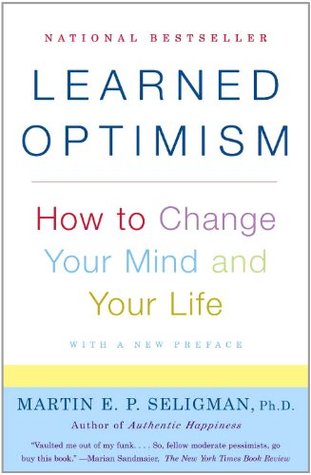More on this book
Community
Kindle Notes & Highlights
A. I am good at my job.
B. I was exceptionally busy this week.
B. He/she doesn’t like
dance. 0 31.
B. I know what to do in crisis situations.
B. I don’t spend enough time with him/her.
A. She always blurts things out without thinking
B. I am good at giving useful advice.
B. I care about people.
A. Everyone was friendly.
A. I make sure I exercise frequently.
B. He/she likes to explore new areas.
A. I don’t pay much attention to my
B. I am a good
supervisor. 1 41.
B. He/she has been hostile lately.
PmB A. Skiing is difficult.
B. I was the best employee.
A.
B. I made a poor choice of stocks.
A. It was pure chance.
B. The diet I tried didn’t work.
B. My friends are negligent
A. I sometimes overestimate how much money
who believe they have temporary causes. TEMPORARY
0, 1, or 2 is very pessimistic.
People who believe good events have permanent causes try even harder after they succeed. People who see temporary reasons for good events may give up even when they succeed, believing success was a fluke.
Some people can put their troubles neatly into a box and go about their lives even when one important aspect of it—their job, for example, or their love life—is suffering. Others bleed all over everything. They catastrophize. When one thread of their lives snaps, the whole fabric unravels.
People who make universal explanations for their failures give up on everything when a failure strikes in one area. People who make specific explanations may become helpless in that one part of their lives yet march stalwartly on in the others.
When bad things happen, we can blame ourselves (internalize) or we can blame other people or circumstances (externalize). People who blame themselves when they fail have low self-esteem as a consequence. They think they are worthless, talentless, and unlovable. People
who blame external events do not lose self-esteem when bad events strike. On the whole, they like themselves better than people who blame themselves do.
Low self-esteem usually comes from an internal styl...
This highlight has been truncated due to consecutive passage length restrictions.
Personalization is also the easiest dimension to overrate. It controls only how you feel about yourself, but pervasiveness and permanence—the more important dimensions—control what you do: how long you are helpless and across how many situations. Personalization is the only dimension
The optimistic style of explaining good events is the opposite of that used for bad events:
It’s internal rather than external.
People who believe they cause good things tend to like themselves better than people who believe good things come fr...
This highlight has been truncated due to consecutive passage length restrictions.
The question is whether or not changing beliefs about failure from internal to external (“It’s not my fault … it’s bad luck”) will undermine responsibility.
I am unwilling to advocate any strategy that further erodes responsibility. I don’t believe people should change their beliefs from internal to external wholesale. Nevertheless, there is one condition under which this usually should be done: depression.
As we wi...
This highlight has been truncated due to consecutive passage length restrictions.
in the next chapter, depressed peop...
This highlight has been truncated due to consecutive passage length restrictions.
responsibility for bad events than ...
This highlight has been truncated due to consecutive passage length restrictions.
If we want people to change, internality is not as crucial as the permanence dimension is. If you believe the cause of your mess is permanent—stupidity, lack of talent, ugliness—you will not act to change it. You will not act to improve yourself. If, however, you believe the cause is temporary—a bad mood, too little effort, overweight—you can act to change it. If we want people to be responsible for what they do, then yes, we want them to have an internal style. More important, people must have a temporary style for bad events—they must believe that whatever the cause of the bad event, it can
...more
First, as we will see in the next chapter, you are likely to get depressed easily. Second, you are probably achieving less at work than your talents warrant. Third, your physical health—and your immune function—are probably not what they should be, and this may get even worse as you get older. Finally, life is not as pleasurable as it should be. Pessimistic explanatory style is a misery.
Depression is pessimism writ large, and to understand pessimism, a subtle phenomenon, it helps to look at the expanded, exaggerated form.
A pessimistic explanatory style is at the core of depressed thinking. A negative concept of the future, the self, and the world stems from seeing the causes of bad events as permanent, pervasive, and personal, and seeing the causes of good events in the opposite way. My
A depressed mood is not usually unbroken. It changes with time of day. Typically it is near its worst just when you wake up.
Getting up and beginning the day lightens the mood, which usually improves as the day goes on, although it will worsen again a bit during the low time of your basic rest and activity cycle (BRAC), usually from three to six P.M. Evening is likely to be the least depressed time of day. Three to five A.M., if you are awake, is the worst.
Sadness is not the only mood of depression; anxiety and irritability are often present. But when depression gets very intense, anxiety and hostility drop away and the sufferer becomes numb and blank.
0 Rarely or
1 Some


